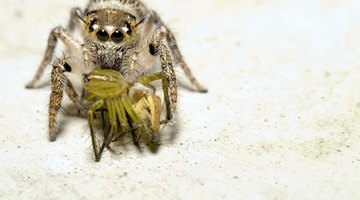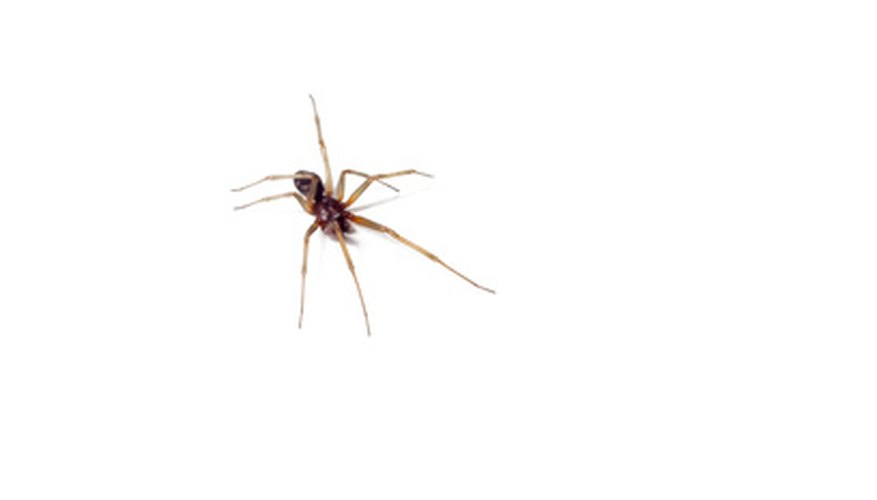Many species of spider are generically referred to as "house spiders," especially by homeowners who commonly encounter brown or grey arachnids scuttling about floor edges or ensconced in wispy ceiling-corner webs. If "house spider" is taken to mean a spider often entering homes, a host of different kinds can be considered --- from the roaming wolf spiders that chase down prey, to the cobweb spiders that wait for their web strands to ensnare victims. Most house spiders are harmless to humans and valuable as pest control. They can be prolific egg layers.
Egg-laying
Spiders in general have the capacity to lay hundreds of eggs at a time. Female "house" or "cobweb" spiders of the family Therididae may deposit more than 200 eggs in their egg sacs; with multiple fertilisations, they may lay nine such egg parcels, according to the University of Rhode Island. Female spiders typically affix these silken egg sacs somewhere in their web (if a web-building species) or physically tote them around.
Wolf Spider Eggs
Wolf spiders are active, fast-moving and relatively large spiders that often enter homes --- particularly in late summer or autumn in response to cooling temperatures. Female wolf spiders care for their offspring in an interesting manner. They carry the egg sacs with them, attached beneath their abdomen. When the eggs hatch, the baby spiders --- called "spiderlings" --- migrate to the adult's back and remain there for days or even weeks.
- Wolf spiders are active, fast-moving and relatively large spiders that often enter homes --- particularly in late summer or autumn in response to cooling temperatures.
- When the eggs hatch, the baby spiders --- called "spiderlings" --- migrate to the adult's back and remain there for days or even weeks.
Cellar Spider
Found throughout much of the world and commonly encountered in airy webs in basements and dimly lit room corners, the cellar spider --- sometimes called the "daddy longlegs" spider --- demonstrates another method of egg care. These slender, extremely long-legged spiders may lay 20 to 30 eggs per cocoon. The mother carries her egg bundle, then the hatched babies, around in her jaws. The University of Michigan's Animal Diversity Web says the mother typically cares for its spiderlings for nine days after they have hatched.
- Found throughout much of the world and commonly encountered in airy webs in basements and dimly lit room corners, the cellar spider --- sometimes called the "daddy longlegs" spider --- demonstrates another method of egg care.
- The University of Michigan's Animal Diversity Web says the mother typically cares for its spiderlings for nine days after they have hatched.
Jumping Spiders

Jumping spiders are familiar to homeowners through those species that stalk their prey on exterior walls or sunny windowsills. The zebra jumping spider is one of the most widespread in the Northern Hemisphere. The female lays some 30 eggs in a single cocoon after an elaborate mating ritual: The male jumping spider signals to the female with its front legs in an attempt to convince her of his intentions --- and to show that he isn't insect prey. If successful, he transfers sperm to her reproductive organ via appendages called pedipalps.
- Jumping spiders are familiar to homeowners through those species that stalk their prey on exterior walls or sunny windowsills.
- The female lays some 30 eggs in a single cocoon after an elaborate mating ritual: The male jumping spider signals to the female with its front legs in an attempt to convince her of his intentions --- and to show that he isn't insect prey.
